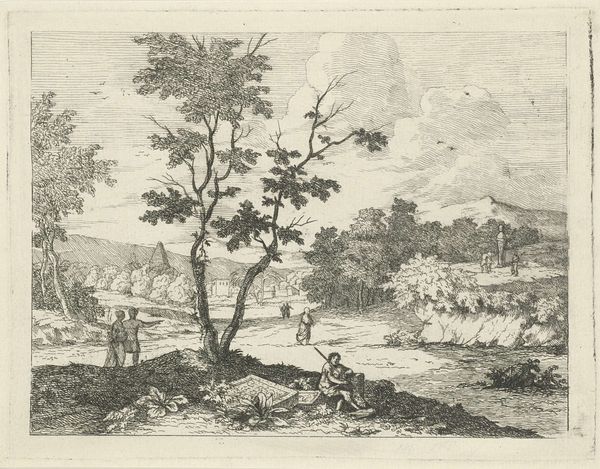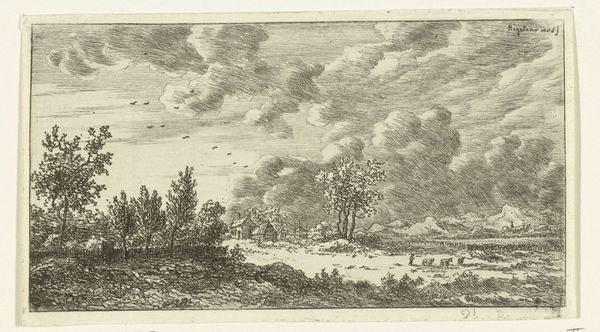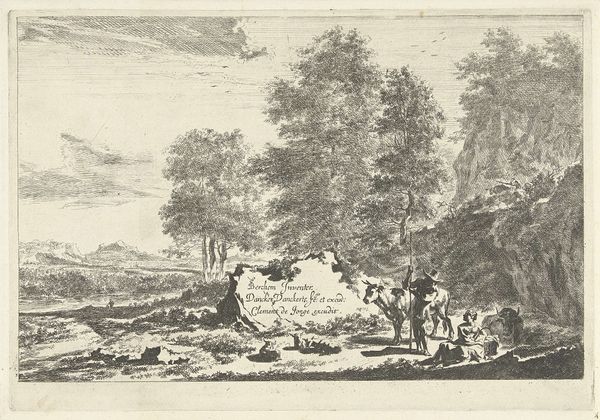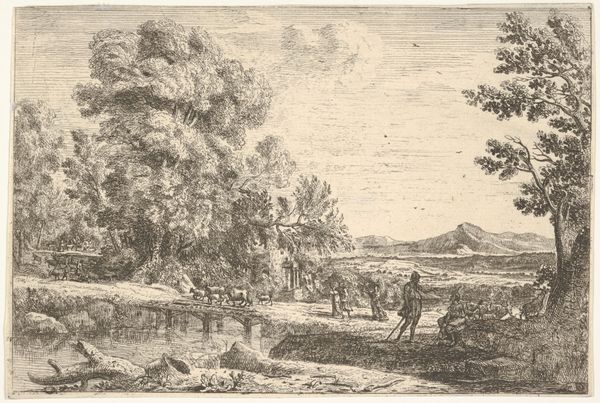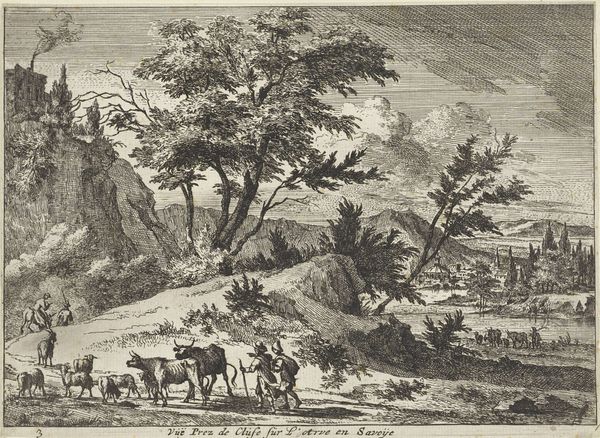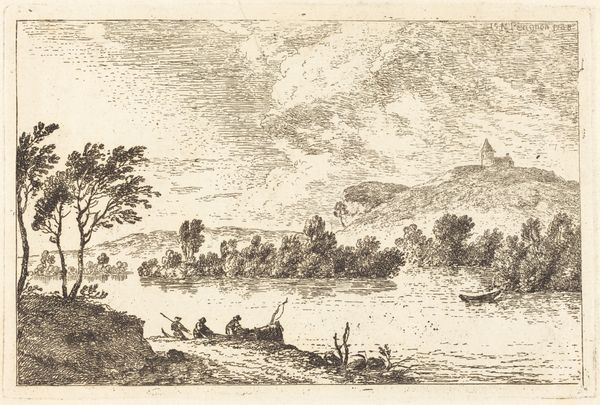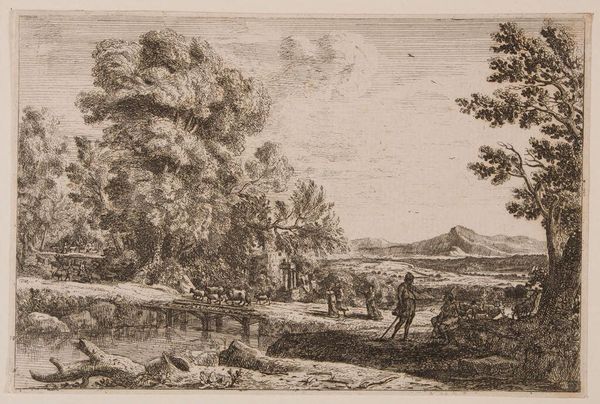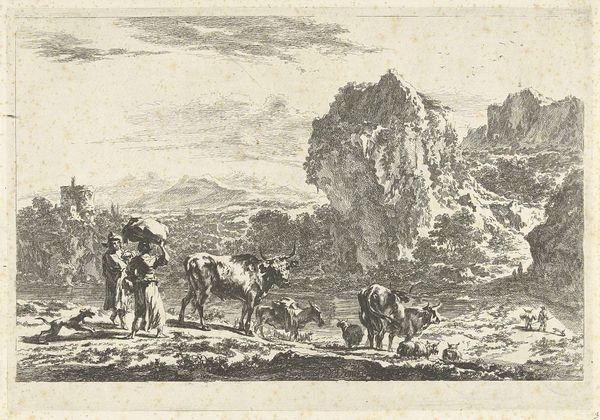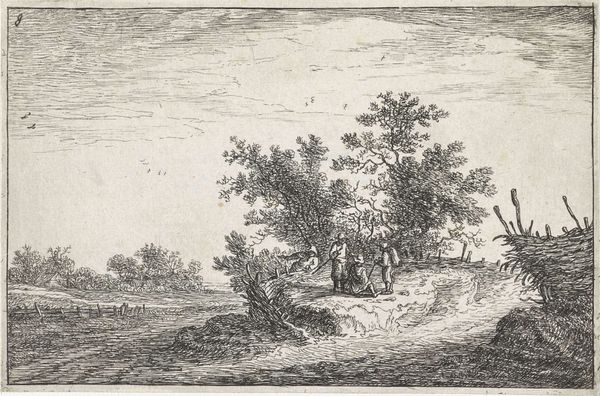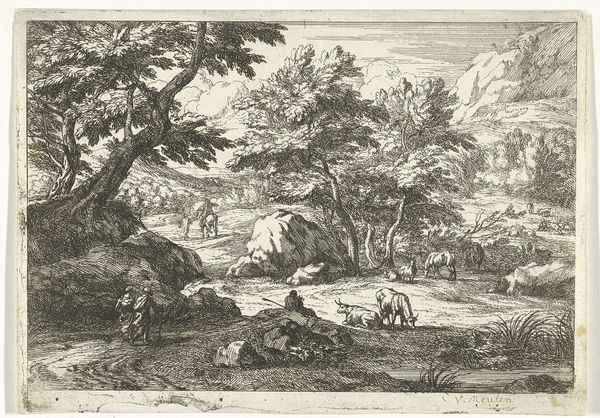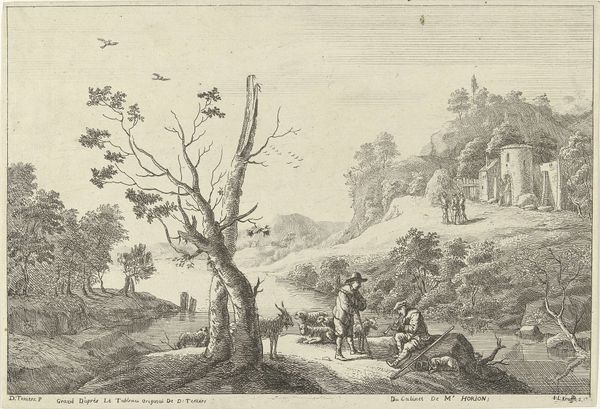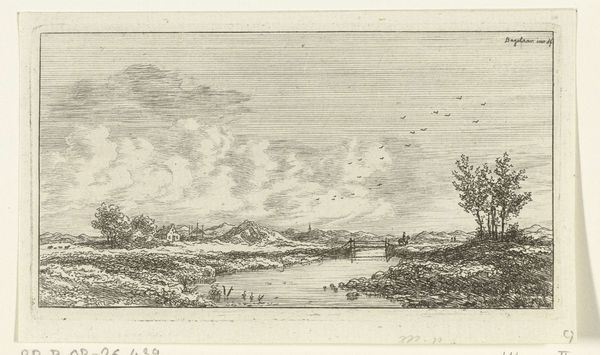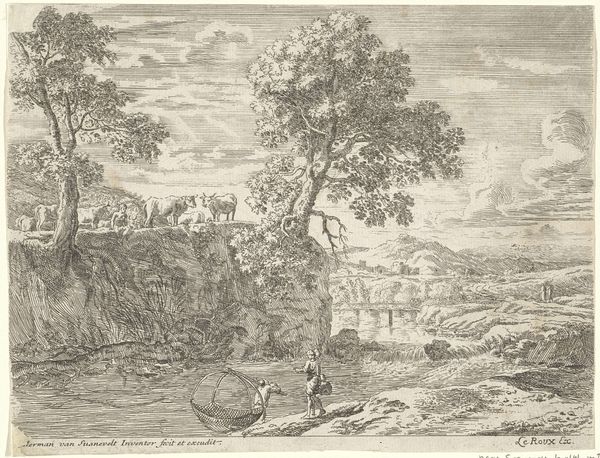
drawing, print, etching
#
drawing
# print
#
pen sketch
#
etching
#
landscape
#
romanticism
#
pen-ink sketch
Dimensions: height 125 mm, width 185 mm
Copyright: Rijks Museum: Open Domain
Curator: What a fantastic Romantic-era landscape! Here we have Joannes Bemme's "Mountainous Landscape with Walkers", created in 1797. You can currently view this print, etching, and drawing at the Rijksmuseum. It has a somber quality overall, wouldn't you agree? Editor: Indeed. It's remarkable how much the pen and ink suggest the materiality of the mountainous terrain. Look at the etched lines creating a sense of depth and volume, almost like feeling the coarse texture of the rock. One immediately notes how nature overwhelms mankind on their own two feet. Curator: I am captivated by the way the artist uses linear perspective and atmospheric perspective together. Note how forms subtly lose focus toward the horizon, with such delicate gradations of tone to achieve the Romantic ideal of the sublime. Editor: I see how those subtle gradations mirror the actual physical process of etching, where layers of acid create differing depths. Bemme must have been quite masterful, considering that this method was probably industrialized during this time. What sort of implications arise for landscape depiction as such? Curator: Quite profound. It almost reflects a tension within Romanticism itself: a yearning for untouched nature rendered through increasingly technological means. We are presented with stark diagonals created with nothing more than cross-hatching, leading to the focal point of the composition. It's almost a philosophical dialogue between human agency and nature's indifferent grandeur, articulated purely through formal structure. Editor: Speaking of human agency, there appears to be notations in the right-hand foreground referencing "F.E. Bährend Fecit 1760" with, underneath, "J. Bemme fec. for 1797". Did Bährend initiate the first sketch that Bemme completed over thirty years later? What conversations existed in Bemme's labor to complete it? Curator: Intriguing points. It shows how different aesthetic visions of the time coexisted within a single artwork. We can delve into that more another time! Thank you, it has given me a better grasp of its production, circulation, and history. Editor: Certainly. It helps to observe not just what's on the surface, but the conditions that allow it to be seen in the first place.
Comments
No comments
Be the first to comment and join the conversation on the ultimate creative platform.
